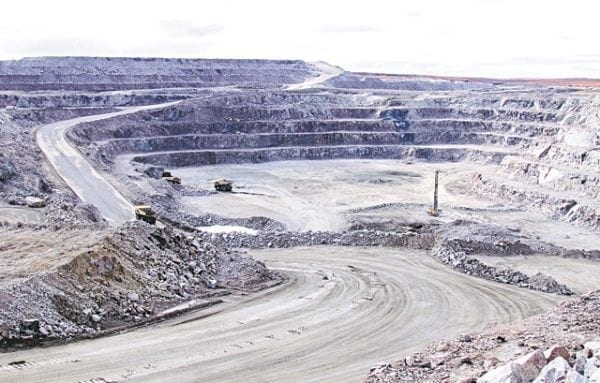A resurgent diamond industry and an increase in staking, offset by 437 cancelled claims, marks this past year as one of tempered optimism for the NWT mineral industry.

Last week, the GNWT released its Northwest Territories Mineral Exploration Overview, prepared by the Northwest Territories Geological Survey, which looks at the end of 2016 and most of 2017.
Geologist Hendrik Falck, one of the overview’s authors, says the industry is buoyed by a lot of large companies finding investment to work on large, established projects such as TerraX’s Yellowknife Gold Project and Nighthawk’s Indin Lake property.
“What we don’t have a lot of is grassroots, really out-there projects where people are trying new areas and new things,” said Falck.
“In some ways there’s certainly a lightening of mood in the [global mineral] industry as a whole, but that hasn’t translated yet up here,” he said. “I’m hopeful that by next summer we’ll start seeing an increase in the number of smaller projects. That’s really what’s missing right now.”
He says the lack of exploration has impacted local economies. Small projects often source goods and services from NWT communities close to their activities.
Falck says that from what he has heard, there are two identifiable causes contributing to this lack of activity.
For one thing, the investment climate—skittish since the recession of 2008—is still not taking too many chances, hence the investment in established projects with high value, such as gold and diamonds.
“The juniors who have a good idea and are sort of one step above a prospector I don’t think are finding it quite as easy to raise money with just a good tale right now,” said Falck.
As well, while gold prices are now somewhat stable—and historically high, said Falck—much of the NWT’s known gold-rich land, in the Slave geological province, is currently subject to land withdrawals while land claims are being negotiated between indigenous groups, the federal government and the GNWT.
There is cause for optimism, though. After the Geological Survey tried some new surveying techniques looking at older pieces of ground that were open for exploration, established diamond operations identified anomalies worth looking into and staked them—this translated to 34 new claims over two weeks.
As well, despite base metal commodities—steel, lead-zinc and the like—having been low in general for the last few years, copper has shown some signs of resurgence. Low industrial activity worldwide impacts these commodities the most. An example Falck gave is tungsten—used now mainly in steel-cutting tools, the fact that new steel production has been slow has caused tungsten prices to collapse, and the NWT saw Cantung close in 2015 as a result.
Sometimes, even more obscure world events can impact mining in Canada’s North. This year, in an effort to combat corruption, the government of India devalued some of its high-value banknotes—the 500 and 1,000 rupee currencies which it identified to be used more than others to buy votes and bribe public figures.
These were also the most common banknotes used in India to purchase small diamonds for jewellery-making, transacation typically done with cash.
“So suddenly they had all of this currency that was now worthless so they couldn’t buy the diamonds that they needed for making jewelry,” said Falck. “The value of diamonds suddenly disappeared so diamond companies saw a slump in their prices and their sales as well.”
Prices have recovered since then and full activity has returned to the market.
Despite these conditions, Gahcho Kue successfully completed its first year of operation and both Diavik and Ekati are proceeding with major mine expansions.